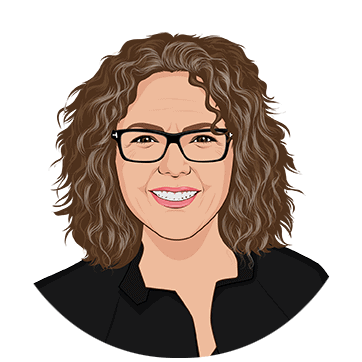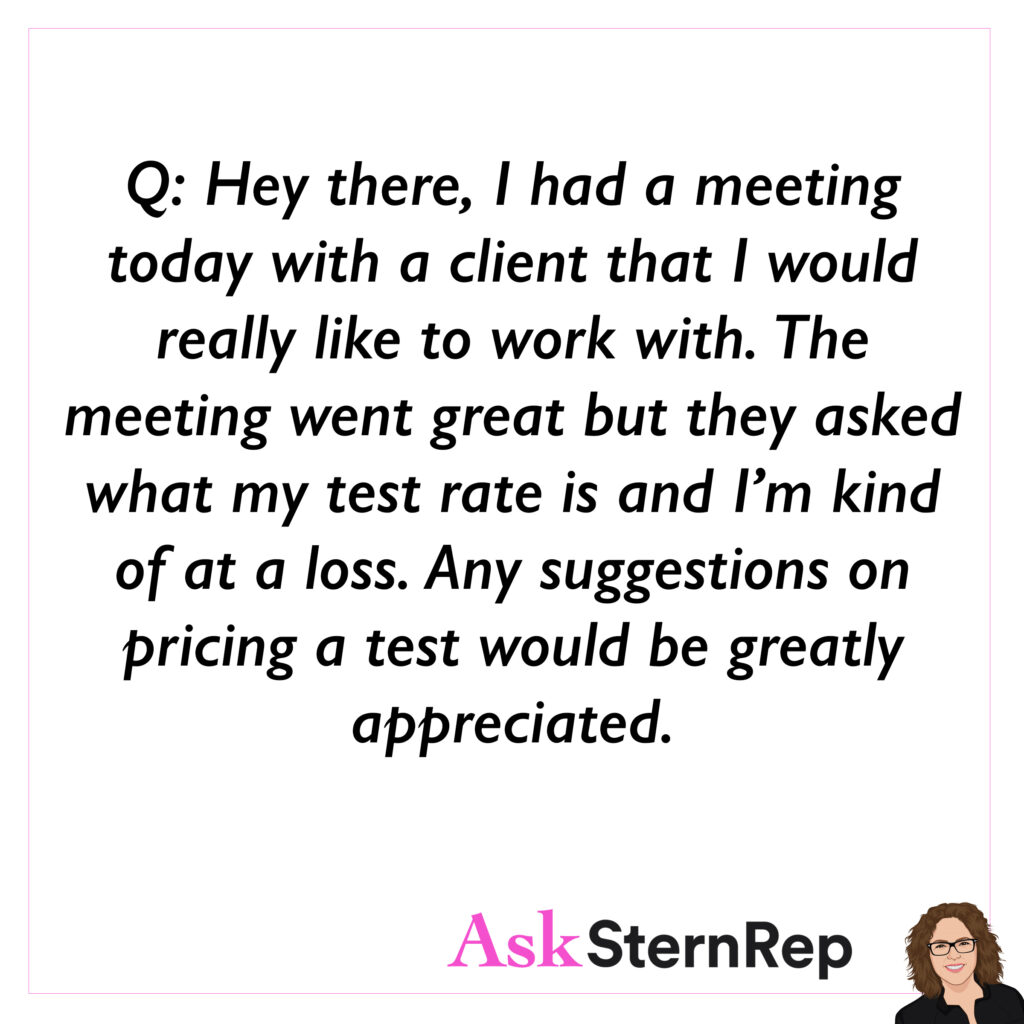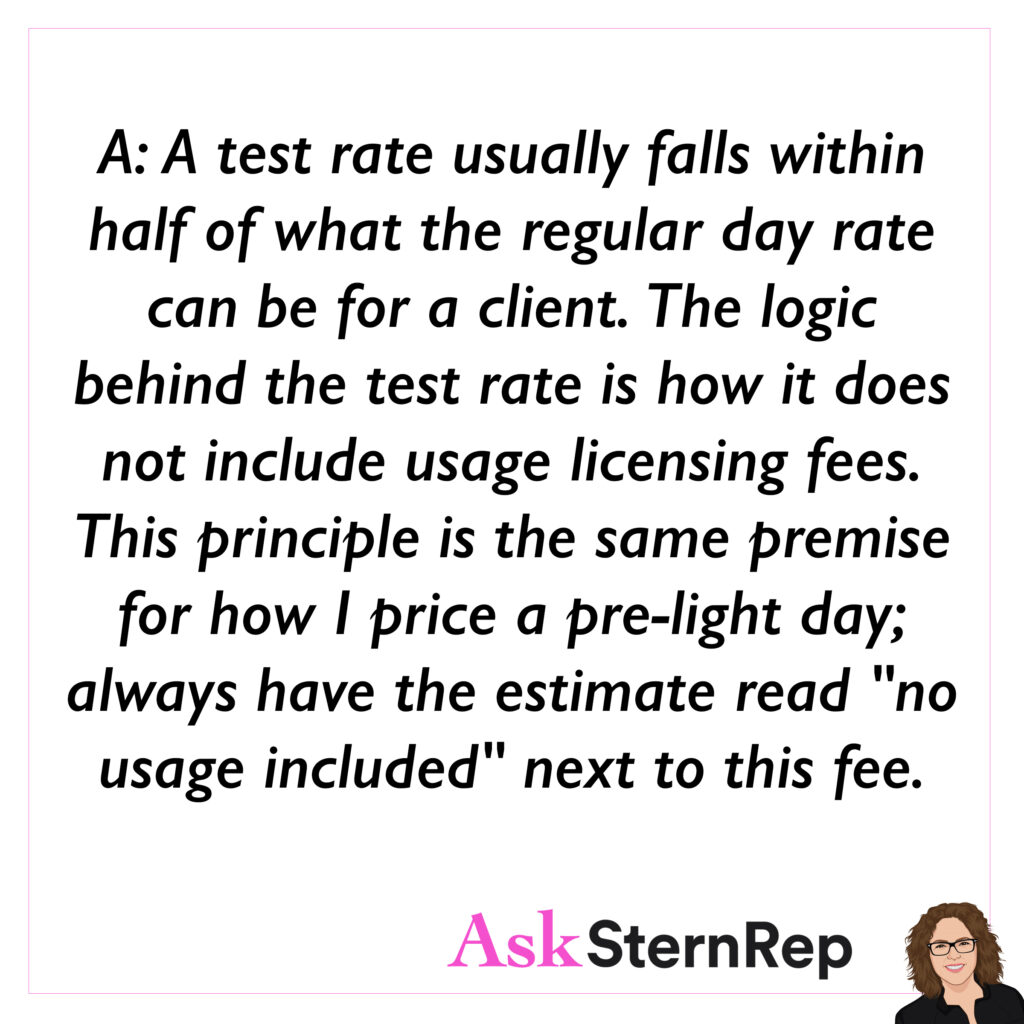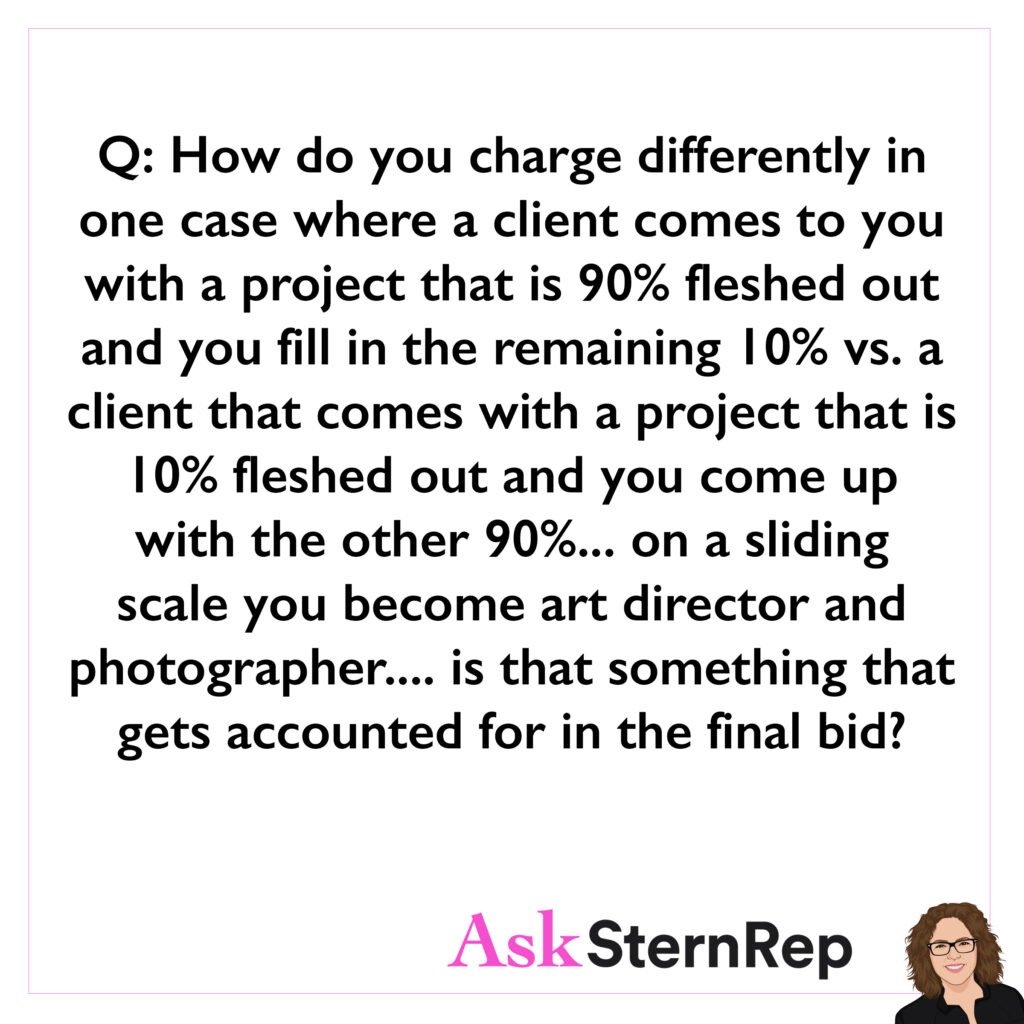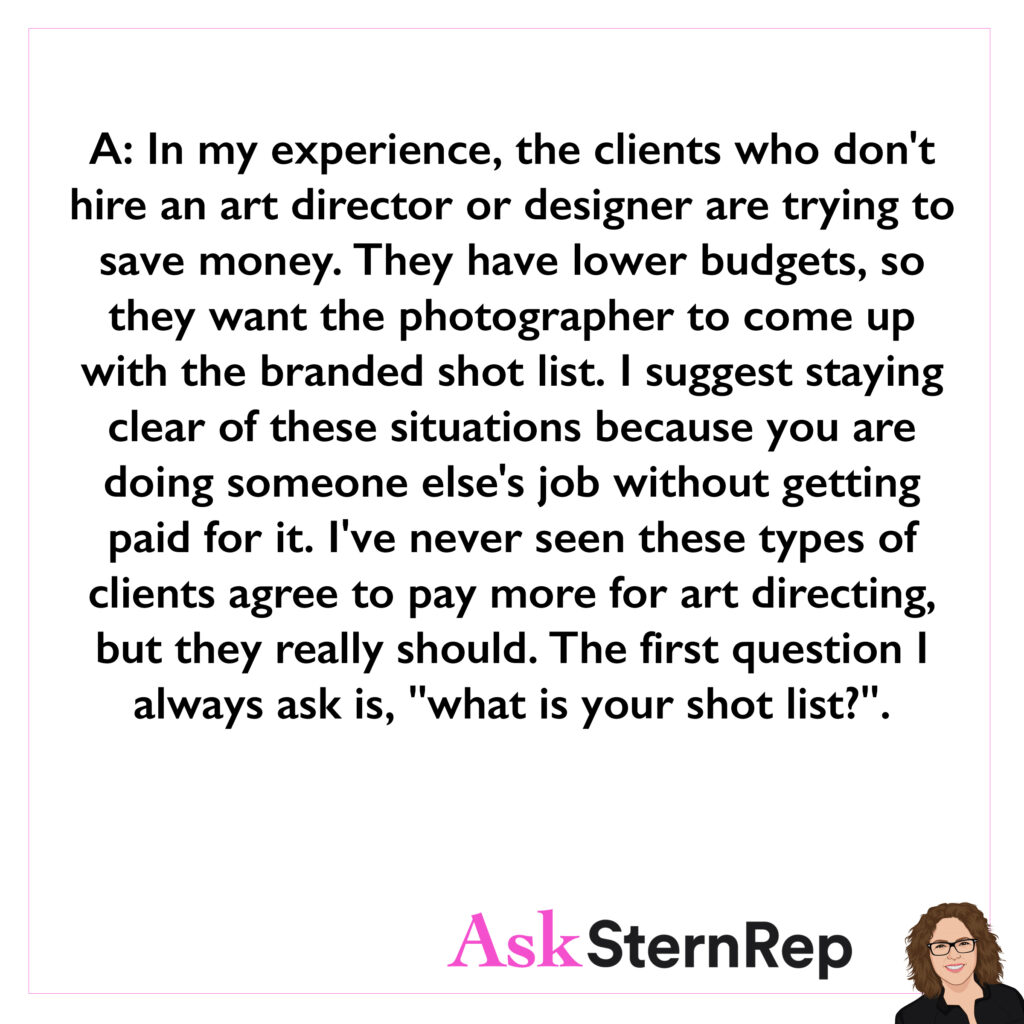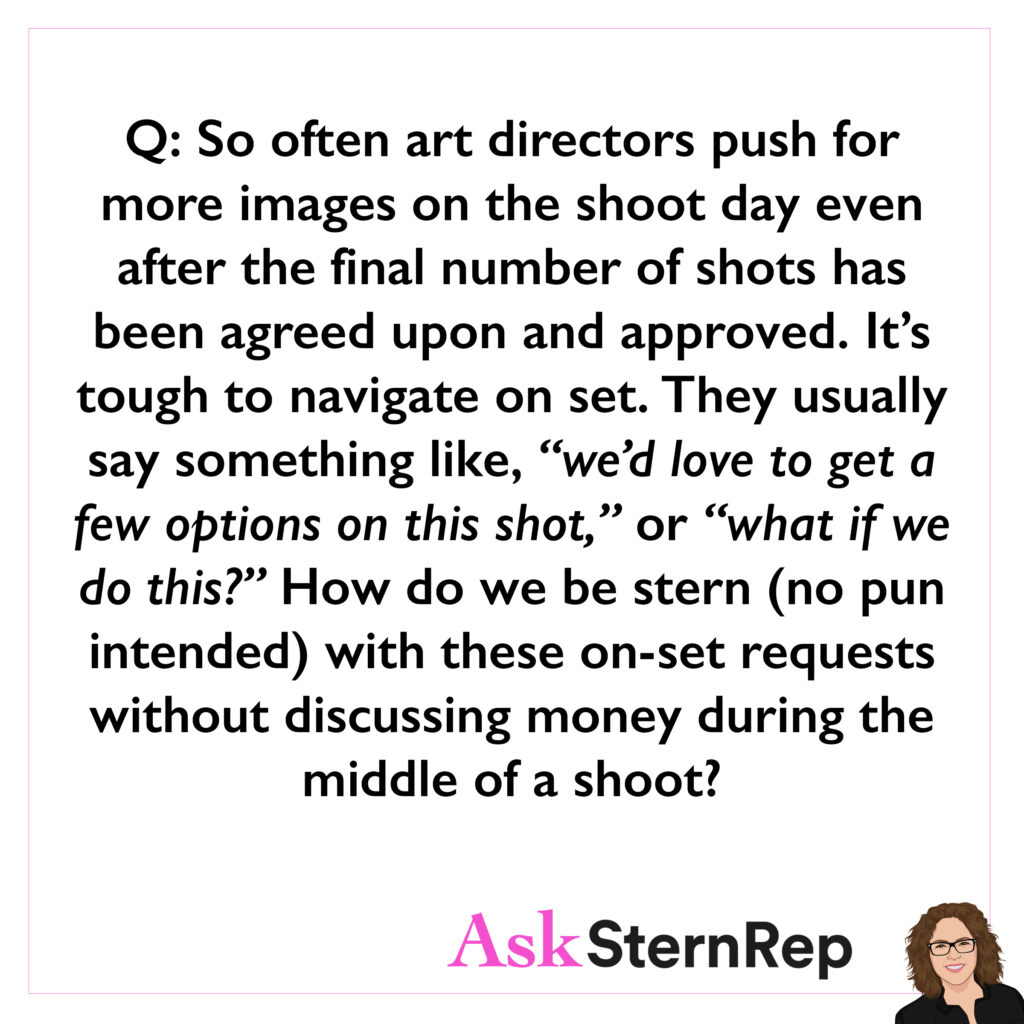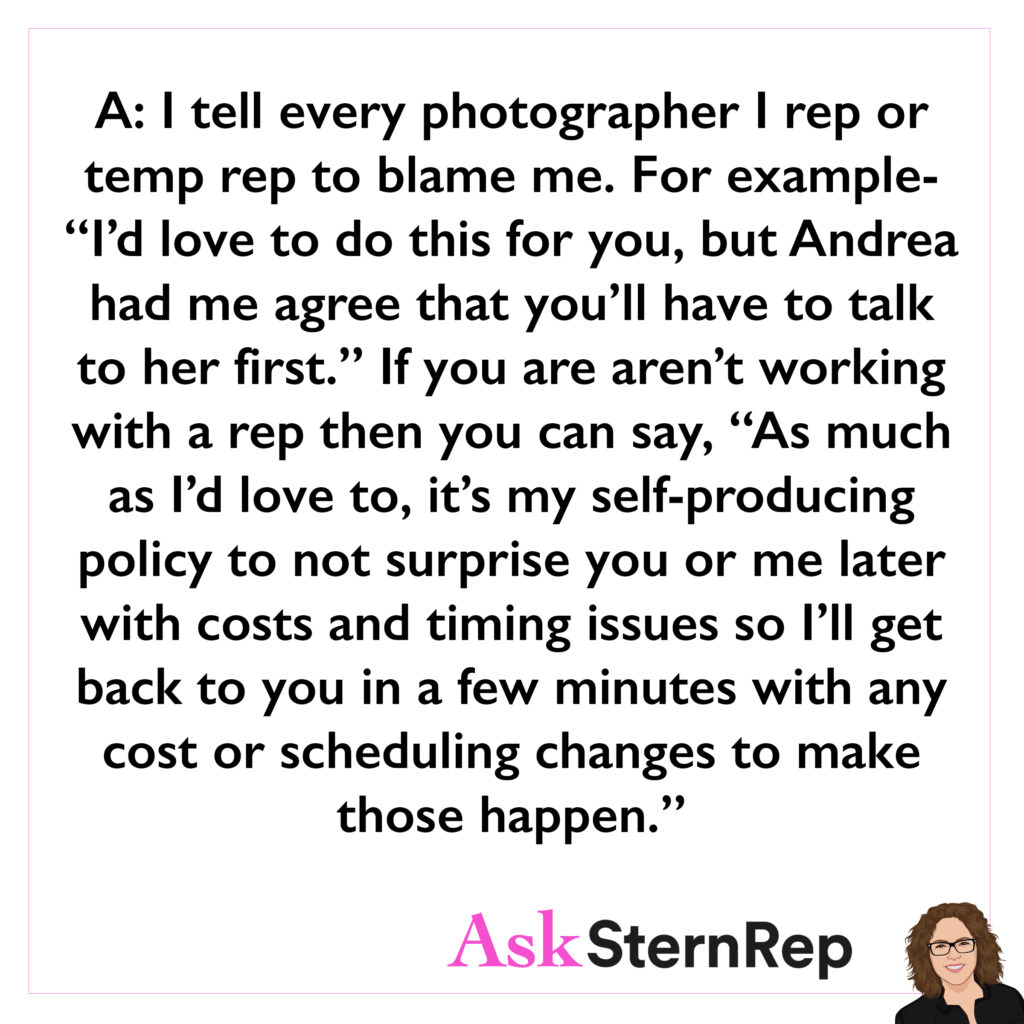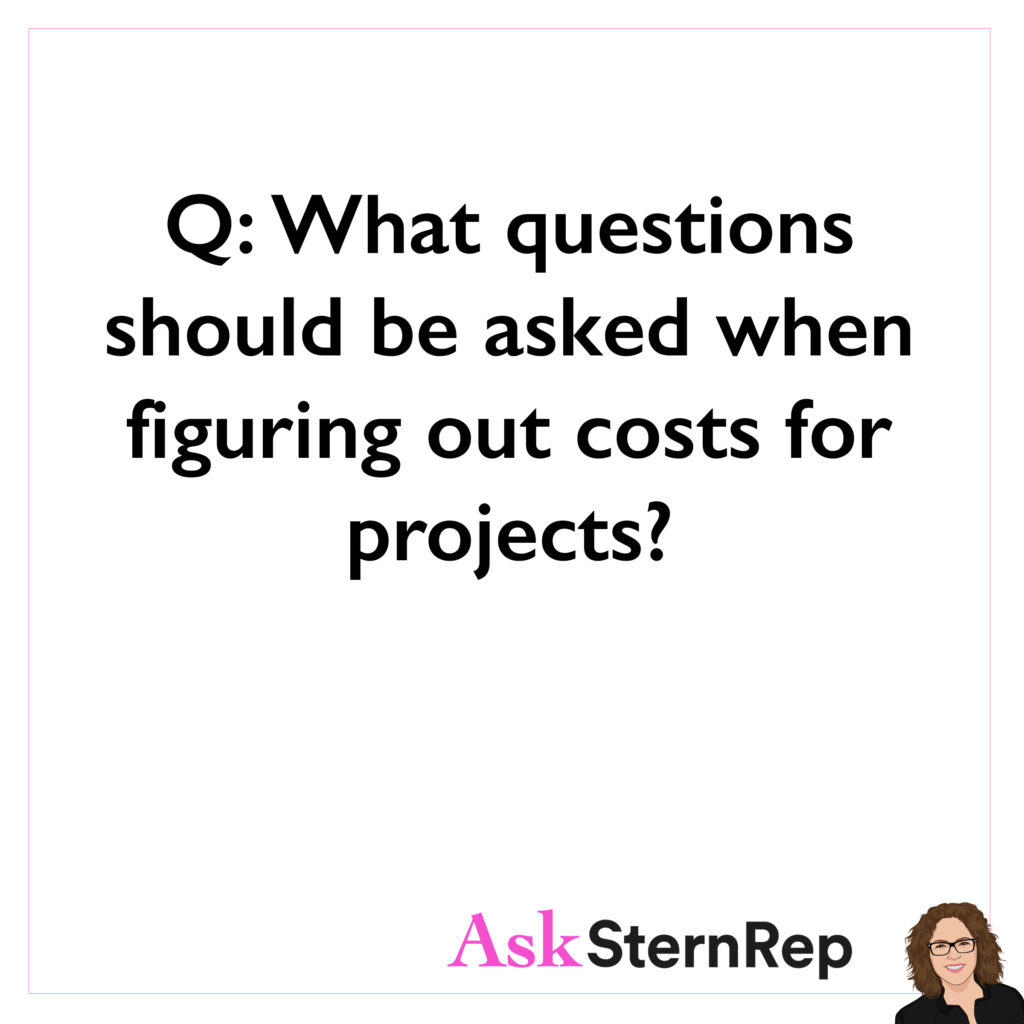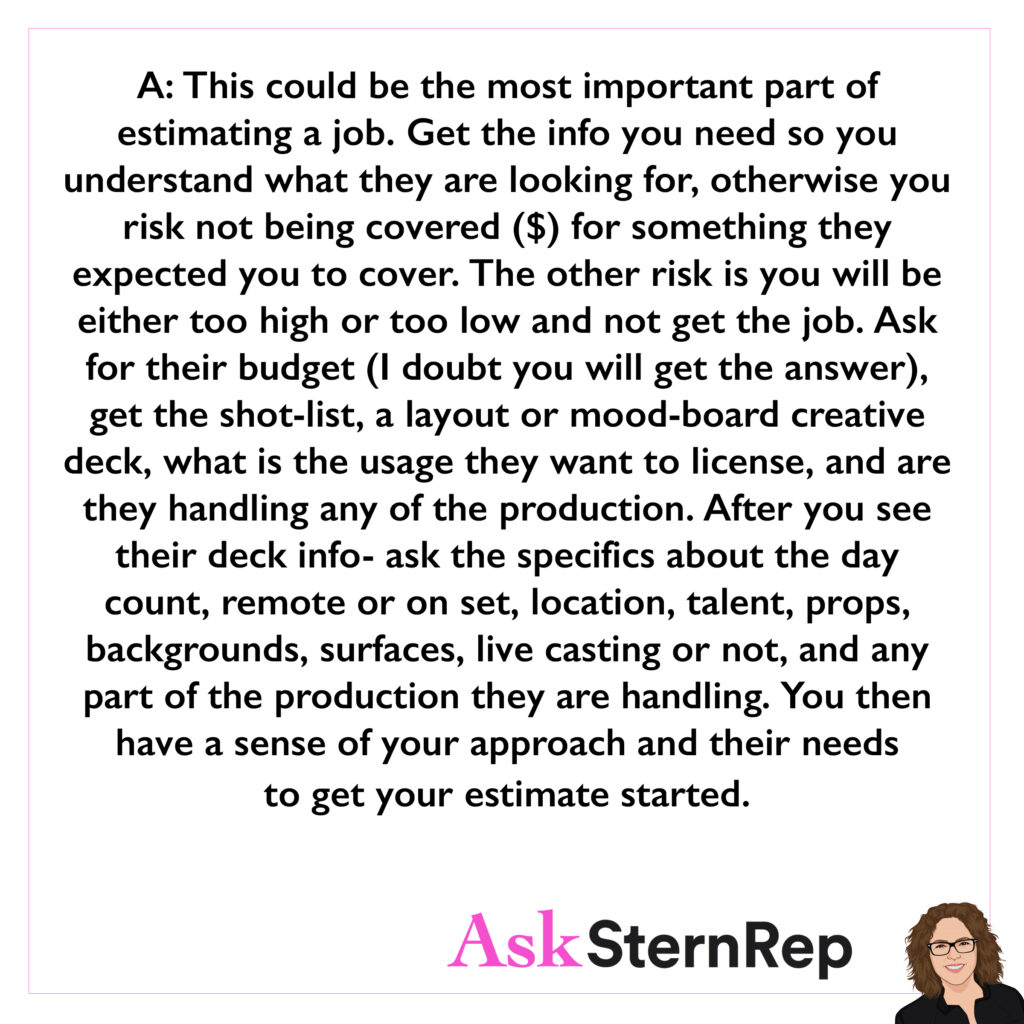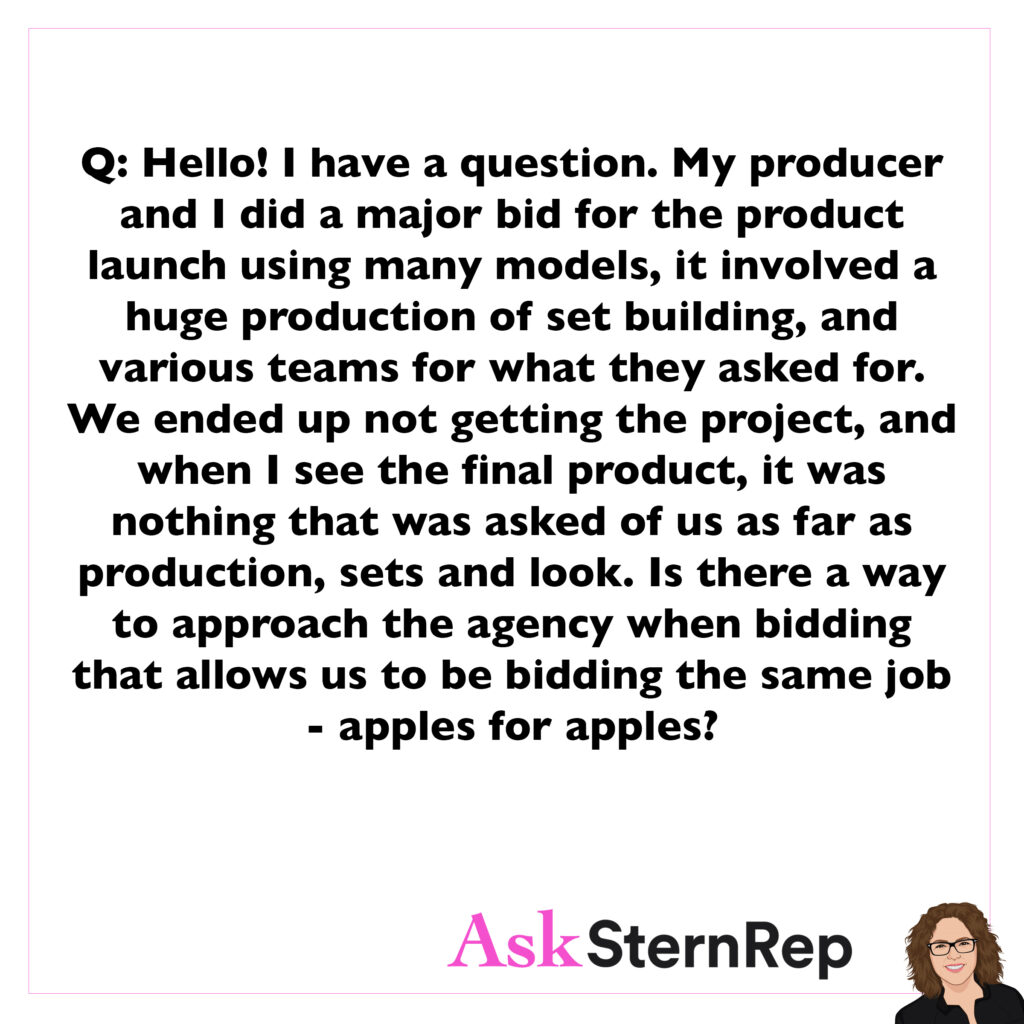
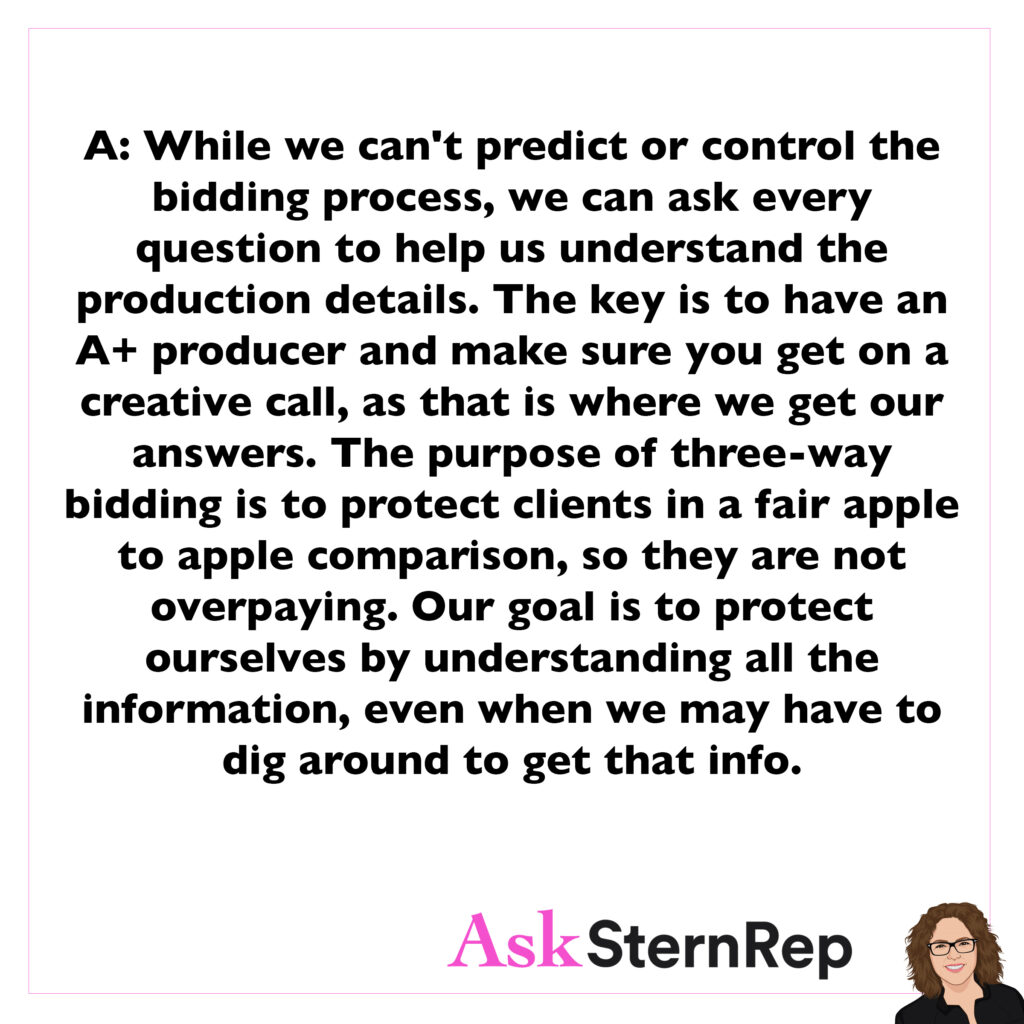
Q:
Hello! I have a question. My producer and I did a major bid for the product launch using many models, it involved a huge production of set building, and various teams for what they asked for. We ended up not getting the project, it was nothing that was asked of us as far as production, sets and look. Is there a way to approach the agency when bidding that allows us to be bidding the same job – apples for apples?
A:
While we can’t predict or control the bidding process, we can ask every question to help us understand the production details. The key is to have an A+ producer and make sure you get on a creative call, as that is where we get our answers. The purpose of three-way bidding is to protect clients in a fair apple to apple comparison, so they are not overpaying. Our goal is to protect ourselves by understanding all the information, even when we may have to dig around to get that info.
